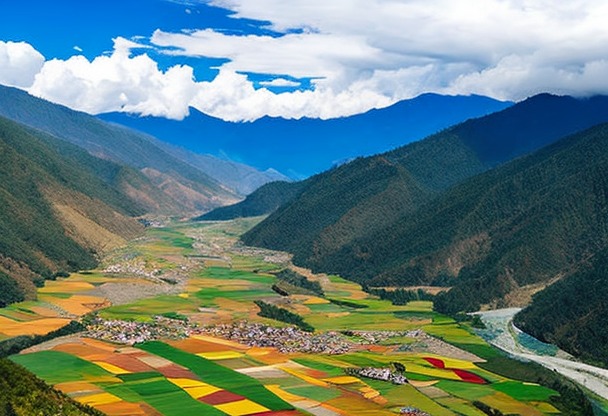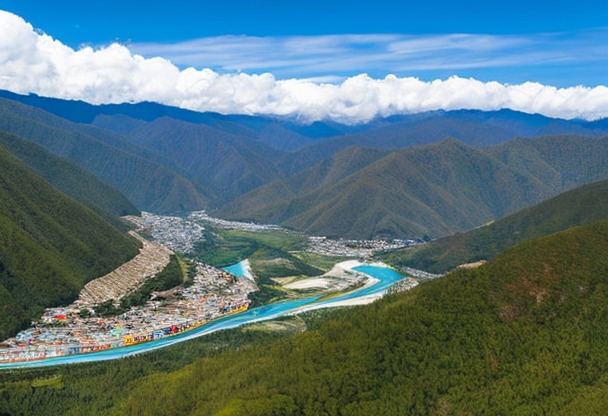WHEN TO TRAVEL TO Bhutan
Choosing the right time for your trip to Bhutan can make all the difference. It's important to consider climatic elements, seasonal events and busy tourist periods to maximize your travel experience.

Location
Climate
Low and high season in Bhutan
As with any country, Bhutan has its busy periods. low and high season. Depending on your expectations and tolerance of crowds, this information can help you plan your stay.The off-season: winter months with fewer visitors
There low season generally corresponds to winter monthsbetween December and February. Temperatures are cooler, with nights dropping below zero at higher altitudes. However, this period also offers several advantages:- Fewer tourists: perfect if you want to discover the country at your leisure.
- Reduced rates: some agencies offer more attractive prices during the low season.
- Increased visibility: the air is drier and less polluted, offering splendid panoramic views of the mountains.
High season: warmer weather and major cultural events
There high season in Bhutan takes place mainly during the months of March to May and September to November. Temperatures are pleasant and rainfall less frequent than in summer. This is also the period of the country's many festivals and religious celebrations. Here are a few reasons to choose the high season:- Favorable weather conditions: ideal for hiking and sightseeing.
- Cultural events: take advantage of local festivals to immerse yourself in Bhutanese culture.
- Magnificent landscapes: admire the rhododendrons in bloom in spring or the autumn colors in fall.
Major cultural events in Bhutan
THE Bhutan is rich in cultural events, and its many festivalsreligious celebrations and public holidays punctuate the year. Attending these events can be an unforgettable experience for immersing yourself in the local culture.The Tshechus: Buddhist festivals not to be missed
THE Tshechus are religious festivals celebrating Tantric Buddhism in Bhutan. These colorful events take place throughout the year, bringing together locals to attend traditional dances and ceremonies dedicated to Gurû Rinpoche, an 8th-century Buddhist master. Among the best-known Tshechus are :- Paro Tshechu: organized in March/April in the Paro valley.
- Thimphu Tshechu: celebrated in September/October in the capital, Thimphu.
- Jambay Lhakhang Drup: held in October/November in the Bumthang region.
Other major cultural events and public holidays
In addition to the Tshechus, other cultural events and public holidays punctuate the Bhutanese year:- Losar: Tibetan New Year, celebrated in February/March.
- Bhutan National Day: commemorating King Ugyen Wangchuck's accession to the throne, December 17.
Insurance
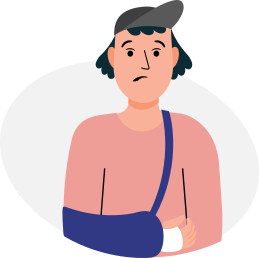
Your credit card does not cover you in all situations, that is whyIt is essential to take out insurance before you leave to avoid any unpleasant surprises. If you need to see a doctor or be hospitalized, in some countries, medical costs are very high and you will then find yourself having to pay several thousand euros.
Our partner Chapka Insurance proposes the contract CAP ASSISTANCE 24/24 with many essential guarantees.
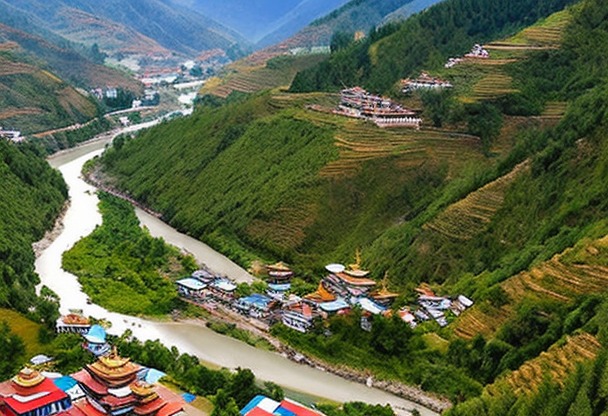
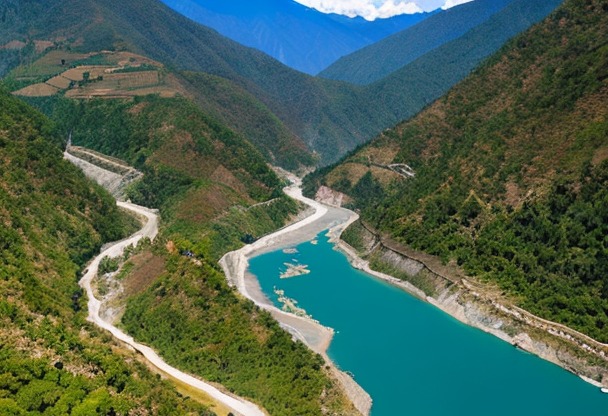
Flights
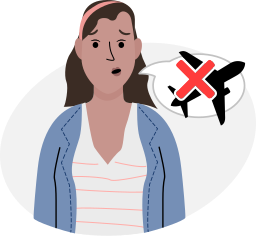
Your flight has been cancelled or delayed ?
You may be eligible for a compensation of up to €600 ! For this, lawyers are responsible for handling your claim with the airline and are only paid when the reimbursement is effective.
In conclusion, no financial risk for you, only advantages!
Immigration and tourism policy in Bhutan: a unique model
Bhutan has set up a immigration and tourism policy which sets it apart from other countries. That's right, The Bhutanese government has chosen to limit the number of tourists in order to preserve its natural and cultural heritage.. This approach is in line with the Gross National HappinessThis is an alternative development indicator based on quality of life and preservation of the environment.Mandatory tourist visa and minimum daily rate
To visit Bhutan, international tourists must obtain a visa before arrival. They are also required to pay a minimum daily rate set by the government, which varies according to the season (from 200 to 250 US dollars). The price includes accommodation, food, transport and guided tours. In this way, Bhutan favors quality tourism over quantity.Immigration statistics for Bhutan: figures on the rise
Despite this restrictive policy Bhutan immigration statistics show a steady increase in the number of arrivals in recent years. According to official data, the country welcomed almost 25,000 international tourists in 2019.Breakdown of visitor nationalities
Tourists visiting Bhutan mainly come from India, followed by China and the USA. Here's the breakdown of nationalities among visitors in 2019: This predominance of Indian tourists is explained by the geographical and cultural proximity between India and Bhutan, as well as by the administrative facilities granted to Indian nationals to visit the country.Increase in the number of visas issued
The number of visas issued by the Bhutanese authorities is also on the rise. Over 20,000 visas are granted to international tourists every year.Most popular visas in Bhutan: tourist visas top the list
THE tourist visa is by far the most popular type of visa for travel to Bhutan. It accounts for around 95 % of visas issued each year. Other types of visa, such as business or family visas, are much less common. It is important to note that the process of applying for a tourist visa in Bhutan is a special one: you have to go through an approved tour operator and plan your trip before you can obtain this document.Bhutan's international tourism figures: a major source of income
International tourism makes a significant contribution to the Bhutanese economy. In fact, the revenue generated by this activity represents around 5 % of the country's Gross Domestic Product (GDP). The majority of this revenue comes from the minimum daily rate charged to foreign tourists.Breakdown of tourism spending
Spending on tourism in Bhutan falls into several categories:- Accommodation : 35 %
- Catering: 25 %
- Transport: 20 %
- Guided tours and cultural activities: 15 %
- Other expenses (souvenirs, tips, etc.): 5 %
Impact on employment
Tourism in Bhutan is also a major employer. It employs an estimated 10,000 peopleThis represents almost 2 % of the country's working population. Tourism-related professions include guides, drivers, hoteliers and restaurateurs.